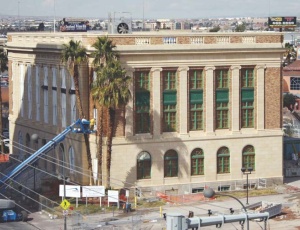... ensure these projects are classified as “maintenance” projects, as opposed to “major alteration projects,” says Wing. “If they didn’t, the cost of the project could be two or three times more, making it too expensive to pursue.”

Making Schools Energy Efficient
Seattle Public Schools is in the third year of a six-year, $490-million capital improvement project that includes making schools energy efficient.
Known as Building Excellence III or BEX III, the district’s capital bond covers seven schools. The building modernization effort includes a number of green features designed to make schools healthier and more energy efficient, as well as create a better learning environment. Where feasible, SPS is adding green roofs, natural ventilation systems and ground-source heat pumps for heating and cooling. Day-lighting, energy-efficient lighting controls, low-VOC finishes and building materials with recycled content are now common green applications that are also being installed and used.
The new systems will help the schools save energy, slash their utility bills, and in the case of the green roofs, limit stormwater runoff and reduce the amount of urban heat reflected into the surrounding atmosphere.
SPS’ energy-saving and conservation measures at the seven BEX III schools include:
- Renovating instead of tearing down entire buildings when possible.
- Replacing single-pane windows with energy-efficient, thermal-pane windows.
- Adding additional insulation to roofs when re-roofing.
- Retrofitting or replacing inefficient mechanical equipment used for heating, ventilation and air conditioning with more efficient equipment that saves money, produces less emissions, keeps temperatures more even and improves air quality.
- Installing more energy-efficient lighting, faucets and toilets.
“More than a third of Seattle Public School’s buildings are more than 50 years old,” says Don Gillmore, SPS Building Excellence program manager. “Since 1995, we’ve been taking steps to make all of our 98 schools ‘high-performance facilities,’ and that not only involves making them healthy and environmentally friendly but sustainable, too.”
High-performance ventilation systems reduce sick days, numerous studies show increased day lighting can boost test scores and by installing energy efficient mechanical systems, SPS is annually saving money that can then be used for additional education programs, he adds.

Post a comment to this article
Report Abusive Comment